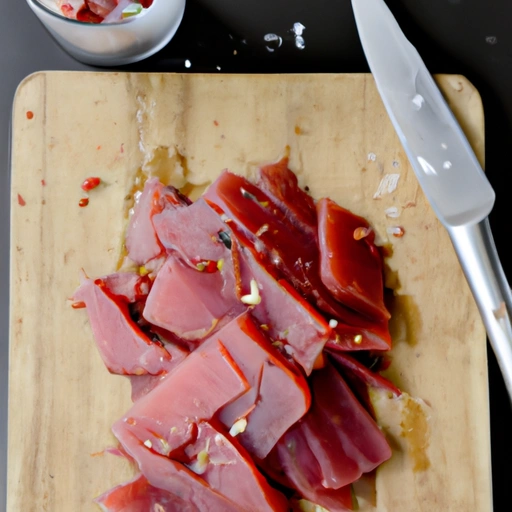Albacore
Description

Albacore is a prized variety of tuna known for its light color and firm texture. Recognized by its scientific name Thunnus alalunga, it's a key ingredient in various global cuisines due to its delicate flavor and nutritional value. Albacore is commonly sold as steaks, canned, or fresh, making it versatile for numerous culinary applications. When considering albacore for recipes, chefs and home cooks should note the measurements in both imperial (American) and metric (European) units to ensure accuracy in ingredient portions.
Common uses
Albacore tuna is commonly used in sandwiches, salads, casseroles, and sushi. It is a frequent choice for classic dishes like tuna melts, Nicoise salad, and pasta with tuna sauce. Due to its mild taste and flaky texture, albacore adapts well to a variety of seasonings and ingredients, making it a favorite among chefs and home cooks alike.
Nutritional value
Calories
A 3-ounce (85g) serving of cooked albacore contains approximately 108 calories (452 kJ).
Protein
The same serving size offers a substantial 22 grams of protein, contributing to muscle growth and repair.
Fat
Albacore has a moderate fat content, with about 1 gram of fat per serving, including healthful omega-3 fatty acids.
Carbohydrates
Albacore is essentially carb-free, making it an excellent choice for low-carbohydrate diets.
Vitamins
It's a good source of B vitamins, particularly vitamin B12, which is vital for nerve function and blood cell production.
Minerals
Rich in minerals, albacore provides selenium and phosphorus, which are important for various bodily functions including metabolism and bone health.
Health benefits
Consuming albacore can offer numerous health benefits, such as supporting heart health due to its omega-3 fatty acid content. It also aids in weight management because of its high protein and low carbohydrate profile. The presence of B vitamins, particularly niacin, helps in energy production and metabolism. Additionally, the selenium in albacore acts as an antioxidant, helping to reduce oxidative stress and inflammation in the body.
Potential risks
While albacore is nutritious, there are potential risks to consider. Due to its position in the marine food chain, albacore may accumulate higher levels of mercury than smaller fish, which could pose a risk if consumed in large quantities, especially for pregnant women and young children. Always consult dietary guidelines to ensure safe consumption levels.
Common recipes
Albacore can be found in recipes such as tuna salad, grilled albacore steaks, tuna burgers, and as a sushi or sashimi ingredient. Its versatility also extends to stews, curries, and sandwiches.
Cooking methods
Albacore can be prepared through various cooking methods including grilling, baking, searing, or even served raw in dishes like sushi. Overcooking should be avoided to maintain its delicate texture.
Pairing with other ingredients
This fish pairs well with bright citrus flavors, such as lemon or lime, as well as with fresh herbs like parsley and dill. It also complements a range of spices, from mild to bold, and can be balanced with creamy sauces or dressings.
Summary
Albacore is a widely-used seafood ingredient that offers versatility in the kitchen and a host of nutritional benefits. From its historical roots in global cuisines to its contemporary culinary applications, albacore remains a favorite for its delicate flavor and healthy profile. Whether incorporated into traditional recipes or innovative dishes, albacore provides a delightful experience for the palate while contributing to a well-rounded diet.